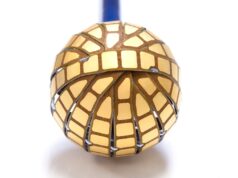The first patient has been enrolled in Biotronik’s BioCONTINUE clinical trial (Biotronik study to assess the continuation of existing risk of ventricular arrhythmias after CRT-D replacement). BioCONTINUE is the first study to investigate the relevance of defibrillator back-up following first device replacement in a heart failure patient population with a primary indication for a cardiac resynchronisation therapy defibrillator (CRT-D).
The decision to replace a CRT-D with either another CRT-D or a CRT device without defibrillator back-up (CRT-P) depends on several factors. One important aspect is that near normalisation in left ventricular ejection fraction induced by CRT is associated with a significant reduction in the subsequent risk of life-threatening ventricular tachyarrhythmia. This creates concerns about implantable cardiac-defibrillator (ICD) indication, as many former CRT-D patients could be eligible for replacement with a CRT-P.
“Eighty per cent of ICD patients implanted for primary prevention do not experience a ventricular tachyarrhythmia during the lifetime of their first device,” states coordinating clinical investigator Daniel Gras, Nouvelles Cliniques Nantaises, Nantes, France. “In addition, if these heart failure patients successfully respond to CRT during their initial device’s lifetime, they may no longer be indicated for defibrillator back-up by the time it is due for replacement. However, even if a patient no longer fulfils the criteria for a defibrillator at the time of CRT-D replacement, the risk of subsequent ventricular arrhythmia could remain. Our goal is to create a risk mapping profile according to individual patient characteristics to assist physicians in making this complex decision.”
In order to evaluate the subsequent risk of ventricular tachyarrhythmia after CRT-D replacement according to individual patient characteristics, BioCONTINUE will enrol 277 patients in 40 centres in eight countries worldwide. All patients will be implanted with Biotronik CRT-Ds and have a minimum follow-up period of two years. The trial’s primary endpoint is the number of patients with at least one sustained ventricular tachyarrhythmia or ventricular fibrillation. The association between the baseline characteristics of the CRT-D population after replacement and the risk of subsequent ventricular tachyarrhythmia will be explored in a subgroup analysis.
“By observing this specific population, BioCONTINUE will provide key insights into the relevance of defibrillator back-up, especially for patients with improved left ventricular ejection fraction and an event-free first CRT-D service life,” comments Albert Panzeri, vice president at Biotronik.












